
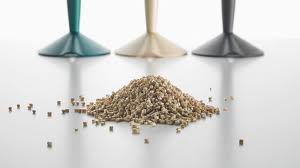
Bio-on nasce in Emilia Romagna, un territorio particolare che unito alle valide competenze delle persone che vi operano, rappresenta una grande occasione nella realizzazione pratica di progetti complessi. Per la prima volta, si è iniziato ad utilizzare la materia prima presente localmente (scarti delle barbabietole). Nascono così i PHAs (Polidrossialcanoati). Ecco la nuova sfida per il futuro. Ottima plastica (poliesteri lineari) prodotta da scarti della lavorazione agricola. Un processo unico, ancora poco noto, con la possibilità di sfruttare appieno la grande esperienza chimica italiana per costruire un grande business mondiale che già da ora ha grandi richieste. Bologna è da sempre considerata la capitale del packaging (macchine automatiche). Bio-on partecipa attivamente alla diffusione della nuova tecnologia per produrre PHAs osservando rigidamente la convenienza nei costi di produzione e lo sviluppo di un LCA rispettoso dell'ambiente: Plastica completamente biologica. Bio-on collabora con aziende in tutto il mondo. Licensing industriale per produrre PHAs di nuova generazione. Bio-on attraverso il brand MINERV-PHA™ opera in tutto il mondo, principalmente utilizzando scarti della lavorazione di barbabietole e canna da zucchero per produrre PHAs (Polidrossialcanoati).
Polyhydroxyalkanoato o PHAs sono un poliestere lineare prodotto in natura da una fermentazione batterica di zucchero. Più di 100 differenti monomeri possono essere uniti da questa famiglia per dare vita a materiali con proprietà estremamente differenti. Possono essere creati materiali termoplastici o elastomerici, con il punto di fusione che varia da 40 a oltre 180°C. MINERV-PHA è un biopolimero PHA ad elevata prestazione. MINERV-PHA ha ottime proprietà termiche. Attraverso la caratterizzazione è possibile soddisfare esigenze produttive da -10°C a +180°C. Il prodotto è particolarmente indicato per la produzione di oggetti attraverso metodi di produzione ad iniezione o estrusione. Sostituisce inoltre prodotti altamente inquinanti come PET, PP, PE, HDPE, LDPE.
BIODEGRADABILITA' NATURALE IN ACQUA
Il prodotto MINERV-PHAaccentua il suo fattore di biodegradabilità in acqua batteriologicamente non pura. Questo tipo di biodegradazione dei polimeri rappresenta il "futuro" della biodegradabilità mondiale. La scomparsa naturale e in pochi giorni di un bio polimero in acqua batteriologicamente non pura (es.: fiume) è un risultato raro e molto difficile da ottenere. MINERV-PHA è il primo bio polimero ottenuto da co-prodotti dello zucchero ad ottenere questo importante risultato. In 10 giorni all'interno di normale acqua di fiume MINERV-PHAsi trasforma in acqua di fiume oppure in acqua di mare. Il futuro della biodegradabilità è rappresentato dall'utilizzo di metodi poco costosi e naturali come la biodegradabilità in acqua. La biodegradabilità in acqua presente in natura (es. fiume) è il mezzo più semplice per distruggere e recuperare gli elementi. Ciò consente di agire sui materiali senza manutenzione (movimentazione trasporto e distribuzione). La biodegradabiltà in acqua è più vantaggiosa rispetto alla pur interessante biodegradabilità in terreno (compost). Il processo è sempre lo stesso: decomposizione dalla natura, o meglio, dai batteri. In acqua si sviluppa a temperatura ambiente e senza nessuna forzatura, per decomposizione, consentendo ad un buon bio polimero la biodegradazione completa in pochi giorni. Se uniamo queste caratteristiche alle "performance" iniziali del biopolimero (resistenza, flessibilità, stampabilità) si riesce facilmente a comprendere la qualità finale del prodotto. I PHAs sono inoltre, le uniche plastiche biodegradabili in mare.
Il PHAs REALIZZATO DA BIO-ON
Attraverso MINERV PHAs (Polidrossialcanoati messi a punto utilizzando Barbabietole) Bio-on ha individuato la possibilità di produrre industrialmente una nuova famiglia di poliesteri biodegradabili e naturali ottenuti dalla barbabietola da zucchero. Il logo MINERV PHAs contraddistingue il prodotto che sarà di volta in volta caratterizzato e protetto nel suo grado di caratterizzazione e conseguentemente commercializzato o licenziato a terzi. Polyhydroxyalkanoato o PHAs è un poliestere lineare prodotto in natura da una fermentazione batterica di zucchero. Più di 100 differenti monomeri possono essere uniti da questa famiglia per dare vita a materiali con proprietà estremamente differenti. Possono essere creati materiali termoplastici o elastomerici, con il punto di fusione che varia da 40 a 180°C. MINERV-PHA è un bio polimero PHAs ad elevata prestazione. minerv le "sfere" di colore bianco rappresentano il bio polimero minerv PHAs ottenuto da Barbabietole da zucchero. Questi elementi sono il risultato dell'accrescimento dei batteri nutriti dai sughi di barbabietola. Nella fase successiva avviene il processo di recovery (recupero di PHAs) ove vengono recuperati i Polidrossialcanoati e separati dal resto del materiale organico della cellula. Tutti i materiali di scarto (modeste quantità) vengono reinseriti nel ciclo produttivo iniziale per nutrire nuove colonie batteriche assieme ai sughi intermedi di barbabietola (Patent esclusivo Bio-on).
[ add comment ] ( 120 views ) | permalink | related link |




 ( 3 / 2573 )
( 3 / 2573 )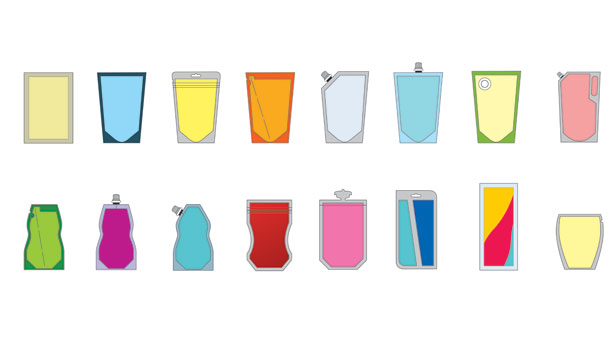
In celebrating Flexible Packaging magazine’s 15 year anniversary, it creates a unique opportunity for us to look back from where we came and also forward as to where we are headed with regard to the bright and exciting opportunities that the future will hold for the flexible packaging industry, and in particular, the popular standup pouch packaging format.
Looking back over the past 15 years and beyond, we can surely see that the flexible packaging industry has been very busy creating a “re-packaging revolution” that has now spearheaded a shift into a new age of packaging standardization which is clearly underway.
The elegant and modern standup pouch and other evolving forms of flexible packaging will continue to change the world as we see it on so many levels.
The standup pouch can be produced in a multitude of formats and designs including the popular classic trapezoidal shape or customized with a unique shape to provide not only distinction on the shelf, but to also add style, convenience and added functionality to suit an ever increasing array of product applications. The standup pouch can be customized from a basic laminated structure to a multi-layer barrier material to accommodate an oxygen sensitive product or the most complex application. It can be beautifully printed with multiple color rotogravure, flexography or digital printing and even successfully full panel labeled for initial new market introductions.
The standup pouch can be produced on-line from rollstock or provided as a pre-made pouch – ready for filling and sealing, mainly dependent upon complexity of application, volume or operator core competency. Incorporate a reclosable zipper, slider, memory strip, spout or dispensing feature and you have a highly functional package which offers broad consumer appeal on a multitude of levels.
The standup pouch has proven to add value and create marketing opportunities where a traditional rigid container may fall short. In some cases, companies have partnered the standup pouch with rigid packaging to create both a choice for their customers, and a clever marketing strategy utilizing the pouch as a refill to promote brand loyalty and address desired sustainability at the same time. This approach also provides an opportunity to create a “transitional strategy” toward the standup pouch as the possible primary package of choice in the future.
Today, you cannot enter a retail establishment without seeing a multitude of flexible packaging formats covering a huge range of new innovative, value added product categories. The ability to peg or stand the pouch has also proven to provide a major advantage of marketing versatility as the standup pouch can be efficiently marketed in a variety of ways including on the shelf as a stand-alone presentation, in a tray as a shelf ready presentation, multi-packed in a carton or case and even pegged or hung as a grab and go display. Aisle by aisle, shoppers are being introduced to packaging changes and we are seeing this packaging shift impacting a broad range of new product introductions and applications.
New Value Added Product Introductions
Increased versatility in marketing throughout the retail environment is bringing packaging differentiation impact to market while stimulating new sales. We have seen complete product categories shift into a multitude of innovative flexible packaging formats including the standup pouch, quad seal-block bottom bags and even stick pack single serve formats and other creative designs.
Fifteen years ago, the standup pouch was still just considered a novelty format by many in the packaging industry. Some skeptics were hopeful that the standup pouch would simply just disappear like so many other disruptive packaging formats introduced over the years.
This time was different – a handful of committed industry visionaries all with a keen insight to the future nurtured and promoted the standup pouch market in North America and the rest is history (some of which is still history in the making).
A History of the Standup Pouch
In order to appreciate the magnitude of change taking place in the market today we must first look back a couple of decades to when there was literally just a handful of standup pouch products in the North American market.
At that time, Kraft’s Capri Sun® took the bold step to enter the market with single serve beverage pouch sold in a multipack of 10 units. This is the same Capri Sun pouch that some of us and our children grew up with as an alternative to the school lunch milk carton. Who would have imagined that this single serve bottom gusseted standup pouch with its attached overwrapped straw would re-invent the way we and a generation of children thought about and accepted pouch packaged products in our everyday lives.
The Capri Sun pouch product line grew into billions of pouches annually over the next couple decades and today reportedly exceeds 5 billion single serve units globally. As mentioned, this single product market success, more than any other, pushed the market forward and has since been used as a model to illustrate consumer acceptance, importance of convenience and the possibility of demographic acceptance of a packaging format; after all, the majority of the population consuming Capri Sun are children between the ages of 4-12 year old. And who was buying this product for those children, but young moms and dads all growing up with a new innovative pouch product that would form as the foundation of acceptance for a multitude of new successful pouch product introductions. To address this changing demographic, Capri Sun has now been launched in a larger standup pouch with spout for the now loyal “tween” generation of Capri Sun lovers.
A multitude of products have followed Capri Sun and are still coming along at an increasing rate, with no end in sight. A new generation of “pouch consumers” setting up the perfect storm of acceptance toward other newly introduced standup pouch product applications.
Making the transition from traditional packaging to the standup pouch even more enticing was the ability to add a zipper reclose device to the flexible package format, ideal for snacks and other suitable product applications. The ability to reclose the flexible package truly revolutionized the flexible package by providing convenience and functionality provided even more reason to consider replacing a canister, composite can, HDPE bottle or bag-in-box package format.
An Opening for Primary Flexible Packaging
Providing this momentum was the popularization of Ziplock bag, which was introduced to the US consumer in the early 1980s and quickly became a staple in the US home for repackaging food products, children’s lunches and leftovers to the tune of billions and billions of bags.
The interesting thing here was that the US consumer was being educated on using and adapting to the concept of zipper reclosable packaging. And what were they doing with these billions and billions of reclosable zipper consumer bags? They were repackaging their food products at home, in many cases repackaging their cereal, cookies, crackers, snacks, frozen foods, etc. In doing so, they were in many cases disposing of the original packaging along with the highly valuable brand information, making the “repackaged” product even more generic that the most generic store brand.
I have seen this occurring in a much larger scale in parts of Europe, whereby consumers are charged based on the weight of their trash disposal and as a result, many consumers leave behind at the supermarket any perceived over-packaging. I witnessed firsthand, the outer carton from cereal purchases stacked not so neatly in piles near the front of the grocery store. I was curious to see customers leaving the store with only the unprinted inner bag of cereal. Not only leaving the cereal box behind, but perhaps more importantly, the printed brand information on the box, now just an unlabeled, generic bag of cereal, any brand manager’s nightmare.
Standup pouch packaging offers a potential solution to this situation by eliminating the carton and providing instead a pre-printed standup pouch with an integrated reclosable zipper feature.
Today, many consumers have less of a need to repackage their food products at home since many companies now utilize zippers and closures in their primary flexible packaging, enabling the product to stay with the original “branded” packaging throughout its entire life cycle. The product also retains its freshness and at the same time adds consumer convenience and encourages repeat sales, as well as critical brand loyalty.
Reclosable Packaging Brings Convenience
The convenience of flexible packaging has now been further enhanced by the incorporation of spouts and fitments which can now be applied to the standup pouch format now growing in popularity for liquid or puree type products.
A multitude of new and innovative product applications are springing up in North American and delighting both the consumer and the companies introducing these products to the market through increased sales. Popular products include apple sauce, blended fruit purees, baby food, beverages, energy drinks, condiments and a multitude of others.
Keep in mind that many of the products being introduced in the standup pouch are not always new; as a matter of fact, many would be considered commodity-based products that have been on the market for many decades. What is new is their re-introduction and re-invention as modern, convenient products suitable for today’s on-the-go culture.
How do you stimulate sales? How do you capture or increase market share? You can reduce the price and buy more of the business or perhaps advertise more, both of which are very expensive and potentially counterproductive.
Another strategy may be to re-invent your product and grow your market by being different than the established traditional leaders. Many companies are doing just that by beginning to re-position their products in a different way, a modern way that is appealing to a new consumer demographic or customer base. Offering a choice to the consumer may inspire them to try your product and your brand and this could lead to increased market share and profits.
There are many companies starting to utilize this repackaging strategy that can be seen in the market today. These segments are growing incrementally with the combined potential representing near term growth in the multi-billions of pouches and replacing multi-billions of older traditional packaging formats with the re-inventing entire categories:
Agricultural Products
Baby Food
Baking Mixes
Biscuits, Cookies, Crackers
Condiments
Confectionaries
Croutons & Salad Toppings
Detergent Pods & Liquid Detergents
Dried Fruits & Nuts
Energy Drinks
Fresh Produce
Frozen Entrees & Meal Kits
Frozen Meats, Poultry & Seafood
Frozen Vegetables & Fruits
Fruit Purees & Yogurts
Granola Cereals
Ice Cream Toppings
Icings & Frostings
Instant Beverages
Instant Cereals
Instant Soups & Side Dishes
Microwavable Convenience Meals
Motor Oil
Pet Food & Pet Treats
Rice & Pasta
Shredded & Cubed Cheese
Snack Foods
Soups & Sauces
Spices & Rubs
Tuna & Specialty Fish
Wine, Wine Coolers & Alcoholic Beverages
In the flexible packaging industry, we applaud this pivot away from traditional packaging and celebrate every new application that shows up on the retail shelf. However, not everyone celebrates the shift toward flexible packaging. Perceived and real complexities of “change” or the “reluctance to change” is still alive and well. It has never been easy to shift from something that works and it’s even more difficult to change or shift from something that has been accepted in practice for 100+ years to something new and unfamiliar.
We can certainly understand this regarding the introduction to new technology and its impact in our own everyday life. Do we not push back; are we still not pushing back in some form or fashion? In order to move forward, it is important to respect what was done previously and the potential chaos that shifting to something new and innovative may cause; but, properly managed and facilitated change can be a wonderful way to create new opportunities for those willing to step out and embrace change to their advantage.
This is exactly the reason why it is so difficult to change North America from a bottle, jar, can, canister or bag-in-box format to a flexible packaging format as the impact of change will affect almost every aspect of what is perceived as normal from incoming logistics through the retail shelf and beyond.
As a result, adapting or implementing to any change may be best accomplished in a gradual or transitional way, not abruptly or without proper due diligence. Some may say, “There’s no reason to ever change from what has worked for the past 30-50 years.” Well, that may not be such a wise business or marketing decision. Keep in mind that what is now considered standard packaging for the past 30-50 years also went through an evolutionary process of refinement and implementation. Consider the transition from glass bottles to PET; steel cans to aluminum; wooden crates to corrugated; as well as the shift to many other transitional and revolutionary packaging changes.
The strategy of not transitioning ones packaging to adapt to new and evolving consumer trends, changing life styles, market conditions or even to a revolutionary new package format could cause one to experience a slide backwards from a long established market position or perhaps losing share to a new breed of agile entrepreneurial companies with nothing to lose and everything to gain by being different and more appealing to today’s consumer and new age retailers.
Retailing and merchandising has also dramatically evolved and matured over the past 15 years going well beyond the traditional grocery store or super market shelf to a new age of mega-retailers. All of these new marketing outlets are looking to appeal to the consumer in a different way by providing a unique shopping experience from the traditional super market.
Super Center
Club Store
Whole Food Markets
Convenience Store
Private Brands
These new-age retailers are creating a point of differentiation through the introduction of exciting new products, goods and services, many of which are presented differently than normally found at the traditional grocery store or supermarket.
New methods of packaging (flexible packaging in particular) are becoming an important component of this new marketing strategy to add excitement and reposition both new and mature traditional products in a different way throughout the retail environment.
We also are seeing dramatic growth of private label or store brands within these retail outlets; many of which have embraced new and innovative packaging as a means of leaping the major brands that apparently have difficulty in changing from their burden of existing infrastructure of older traditional methods of packaging, including bag-in-box, bottles, cans and jars, etc.
Due to the demands for sustainability from mega retailers like Walmart, companies are also now starting to realize, more than ever, the true cost of many traditional packaging methods, particularly relating to the total cost of packaging material – component on logistics within their operations. Today CPGs are being pushed to dive deeper into their operations to reduce costs and over packaging. Packaging cost reduction and associated factors are now being further scrutinized and analyzed in an effort to meet the demands for lower cost expectations.
Transportation
Warehousing
Material Handling
Packaging Process Complexities
Over Packaging –Redundant Packaging
The biggest impact of these factors has been the increasing cost of fuel impacting transportation and its affect on logistics. In addition, multi-component packaging is now also under scrutiny with its impact on sustainability. These factors have caused many companies to rethink their choice of packaging and we are now beginning to see the results of this process being reflected in the new packaging that is showing up on the retail shelf.
There is no question that flexible packaging is now being taken more seriously than ever as a truly viable alternative to many forms of traditional rigid packaging. This trending shift away from rigid packaging has begun a gradual tipping point that will have ramifications for decades to come.
The flexible packaging industry’s ability to now provide packagers the choice to utilize pre-printed rollstock or pre-printed pre-made standup pouches has further enabled many more companies to enter the market utilizing pouches.
This choice offers both large and smaller companies the opportunity to position their product in a pouch format utilizing lower cost fill/seal machinery, but still knowing that as their volumes increase, they can implement a form/fill/seal/rollstock strategy to further reduce packaging cost as they grow their business moving forward.
Our Next Strategy
Contract packagers have been a very strategic means of growing the standup pouch business over the past fifteen years. They offer the opportunity to enter the market without the typical risk and capital investment associated with implementing a new packaging format. The North American contract packaging infrastructure will continue to grow and prosper in supporting the shift toward standup pouch packaging and will be an important piece of the puzzle as the market further develops.
As an industry, leading the charge in the “Repackaging of America,” it will also be critical for us to continue to communicate the overall and total benefits of flexible packaging, as compared to other forms of packaging in relationship to energy consumption, logistics, source reduction and the total impact from an environmental perspective. Education will be the key to further drive the momentum of change.
We will also need to push forward with continuous improvement of our material developments, printing methodologies, pouch making and flexible packaging machinery technologies. All of these critical areas will need continued close collaboration by all parties to meet the global challenges and growth opportunities coming our way.
I’m often asked the question “What’s next?” “What’s the next big thing?”
I am always somewhat perplexed by this question, particularly when it is asked by my own flexible packaging industry colleagues, as it illustrates to me that many are looking beyond the opportunity they have in front of them, beyond the great packaging shift that is presently underway.
From my perspective, we are living the next big thing in packaging at this very moment in time. Of course we will see new flexible packaging iterations of the standup pouch format, but at this moment, we are just getting started with a revolutionary packaging format that has all the right stuff for this time in history.
We have seen what has occurred over the past 15 years; now let’s take a moment and celebrate what is here to stay for the foreseeable future. Embrace it and enjoy the fact that you as a flexible packaging professional are making history and truly impacting the way packaging will be done for decades to come.
By Dennis F. Calamusa
President
Alliedflex Technologies, Inc.
[ add comment ] ( 66 views ) | permalink |




 ( 3.1 / 2598 )
( 3.1 / 2598 )
CPGs forge emotional connections with consumers through products that contain minimal ingredients and streamlined packaging.
By Nancy Brown, Contributor
Back in the 1960s, the acronym “KISS”—”Keep it simple, stupid”—began showing up on bumper stickers, billboards, and t-shirts across the country. A design principle first used by the U.S. Navy, “Keep it simple, stupid” is defined by the belief that most systems work best if they are kept simple rather than made complex.
Throughout history, this sentiment has been championed by many esteemed artists and thinkers, among them Leonardo da Vinci (“Simplicity is the ultimate sophistication”) and Mies Van Der Rohe (“Less is more”). And in the decades since it became a cultural touchstone, everyone from software designers to animators has hopped on the KISS bandwagon.
Today, simple is still better, and now consumers have caught the KISS fever as well. After all, everyone today wants their lives to be simple—especially busy moms and dads who want to give their families simple, healthy, wholesome meals without all the fuss. Simple is now mainstream, not alternative, and it has become synonymous with imperfect and raw, not perfect and quiet. So it’s no surprise that consumer packaged goods companies have taken notice of this fact and are forging emotional connections with consumers through products that contain minimal ingredients and streamlined packaging.
Most significantly, “simple” brands are showcasing their simplicity on pack, putting their single most important idea front-and-center through photography and copy. Brands such as Simply juice, Simplait yogurt, Simple Skincare, Wellness Simple dog food, and Lay’s Simply Natural Potato Chips wear their simple pride on their chests with packaging that is minimal, elegant, and free of all the fuss.
Here are five “ingredients” that brands can use to communicate the simple ethos on-pack:
1. Put your simplicity front-and-center.
“Simple” and “simply” are being used both in product names and in their subheads. Pillsbury Simply touts its simple status right there in the title, while Dorset Cereals modifies its brand name by calling itself “simply delicious muesli.” Simple is becoming mainstream consumer language now, and can be found on more products than you may realize.
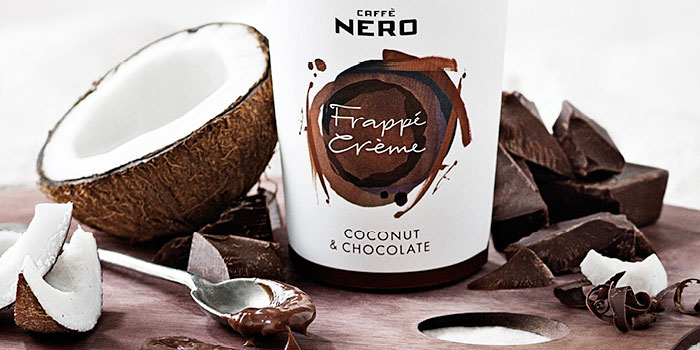
2. List your ingredients.
Simple products usually contain just a handful of ingredients, which they put front-and-center on their packaging. For example, Simplait from Yoplait has “just 6 simple ingredients,” as indicated in copy sandwiched between the brand name and a large product illustration. Lay’s Simply Natural Potato Chips lists just three ingredients—potatoes, expeller-pressed sunflower oil, and sea salt—on its bag…although that still doesn’t exactly make them good for you!
3. Show your product.
To cue appetite appeal, simple brands are literally and figuratively showing their products on their packaging. Simply Juice from Simply Orange Juice Co. uses fruit photography on its labels to convey that there’s not much more inside their bottles than the purest form of the product. Dorset Farms cereal boxes feature peek-a-boo windows that let you see the all-natural granola inside…and not much else.
4. Go heavy on the white space.
Nothing conveys simple like a whole lot of white space. Many brands try to pack a lot of claims and visuals on their products, but simple brands make it clear that they are really just about offering the good stuff—no misleading claims or unnecessary graphics to bog them down. Ceres All-Natural Juices takes this approach, and as a result, really makes the product the star.
5. Stress your single most-important message.
Simple products focus their brands on one concise message and then drive that message home. Simple Skincare products from Unilever put the copy, “No perfume, no colour” on its packaging, telling you what’s not inside, as opposed to what is. Wellness Simple Dog Food puts its “SIMPLE” moniker in large, capital letters, and also adds “Limited Ingredient Diet” directly underneath, to make it known that Fido is getting only the very best, curated ingredients in his food.
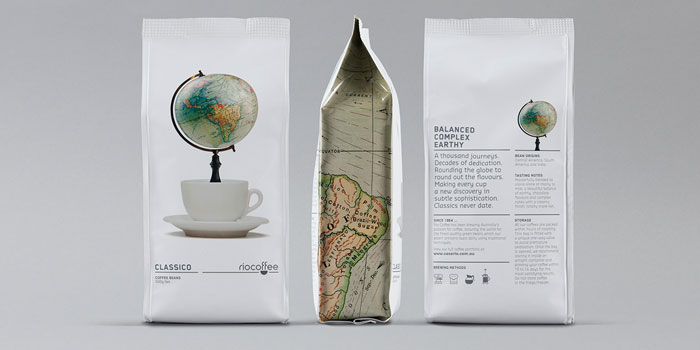
And while we agree that simple is often better, we do think that using as many of these suggestions together (which isn’t exactly minimal) will help you leverage your brand in this trendy new category. So go ahead and give your brand a KISS—nobody will dare call you “stupid” for doing so in today’s market.
Nancy Brown is managing partner of brand agency CBX.
[ add comment ] ( 160 views ) | permalink |




 ( 3 / 2621 )
( 3 / 2621 )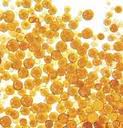
There is a lot of chatter about bioresins, biodegradables, and oxodegradables but what are the myths, the truths, and do they all have a place in the total plastics sustainability strategy?
Renewables or bioresins, in the plastics sense, are plastics made from organic sources vs. fossil fuels (although fossil fuels are renewable, in a long-term sense).
Truth: Everyone is concerned about the environmental challenges related to using plastics. Myth: Plastics made from renewable resources will solve all the problems associated with taking environmental responsibility for using plastics.
Truth: Not all bioresins are created equally; renewable plastics that are produced from plant products are chemically identical to fossil-fuel-derived plastics. The only difference is the feedstock for the ethylene that is produced. Not all bioresins are equal to a petroleum-based resin. Not all biobased resin has an established market for recycling. Not all biobased resins are degradable or compostable.
Myth: Shouldn’t a non-fossil-fuel-derived plastic be enough to satisfy the needs to be green and reduce environmental impact? Not really. When thinking about the benefits and consequences of use, there is really no difference. The plastic is the same. Whether or not plastics are produced from fossil fuel or plant fuel, they won’t solve the municipal solid waste problem.
Broad claims of carbon footprint reduction by using plant-based plastics are true. Plants take in CO2 and give off oxygen. The “sequestering” of CO2 is what enables plant-based resins to claim to have a positive carbon footprint. This narrow view of environmental friendliness does not take into account land use consequences, water consumption, environmental impact of fertilizer use, nor the amount of energy used to produce and transport the plastic resin.
Now for the consequences. Oxydegradables will break down on exposure to oxygen over the long term. They are useful for short-term applications, but can cause serious problems in the recycling industry if they get integrated into the plastics that are going back into the resin production cycle.
Biodegradables break down organically, not necessarily from exposure to air, but that does help promote the degradation. Again, this resin is useful for short-term applications similar to oxydegradables. Both of these cannot be mixed with non-degradable resins and still retain the base resin’s properties when processed as post-consumer resins (PCR). Without clear labeling, this creates significant challenges for waste stream processors for sorting and for plastics reclaimers in keeping these resins out of the recycling stream.
Not to be down on plastics made from renewable resources as they are a positive development and one that should be part of the overall plan to reduce the impact on the environment. The main concern is that focus will be taken away from the real issues at hand, if people are led to believe that renewables will solve plastics’ negative environmental image.
By: Tamsin Ettefagh, vice president, Envision Plastics
Published in May 15, 2013
www.packstrat.com
[ add comment ] ( 61 views ) | permalink |




 ( 3 / 2681 )
( 3 / 2681 )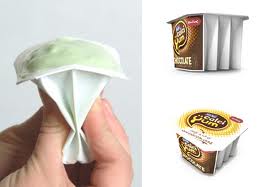

CrushPak® is a unique packaging technology that offers consumers a new way to consume food products, with or without a utensil.
CrushPak is a convenient, on-the-go pack that gives consumers a choice in how they eat their favourite foods and manufacturers new ways to position products and create new consumption opportunities.
APPLICATIONS
Yogurt, cream cheese, ice cream, jelly, fruit pulp, pudding, or paste - any viscous product can be delivered to your customers in a convenient, easy to use pack that builds brands and adds value.
PROVEN SUCCESS
CrushPak is not an untested new product – it has already experienced phenomenal success. Adults enjoy the convenience and kids enjoy the fun.
CrushPak has shipped over 500 million units since 2009 and is currently licenced to Danone in USA, Canada, Mexico, Brazil and Argentina. CrushPak has also been licensed to Parmalat in South Africa and Bright Dairy the 3rd largest dairy company in China.
MANUFACTURED ON YOUR EXISTING LINES
Implementation is rapid and involves little CAPEX as the pack runs on existing machinery and uses standard materials. CrushPak reduces the plastic content of a standard cup by 35%, creating a host of cost savings and environmental benefits. It can be manufactured in sizes ranging from 15g to 350grams.
SUSTAINABLE COMPETITIVE ADVANTAGE
CrushPak is protected by strong intellectual property rights providing our exclusive licensees with a unique opportunity to seize sustainable cost and market advantages over their competitors.
For more information visit: http://www.crushpak.com
[ add comment ] ( 49 views ) | permalink |




 ( 3 / 2488 )
( 3 / 2488 )

 Calendar
Calendar